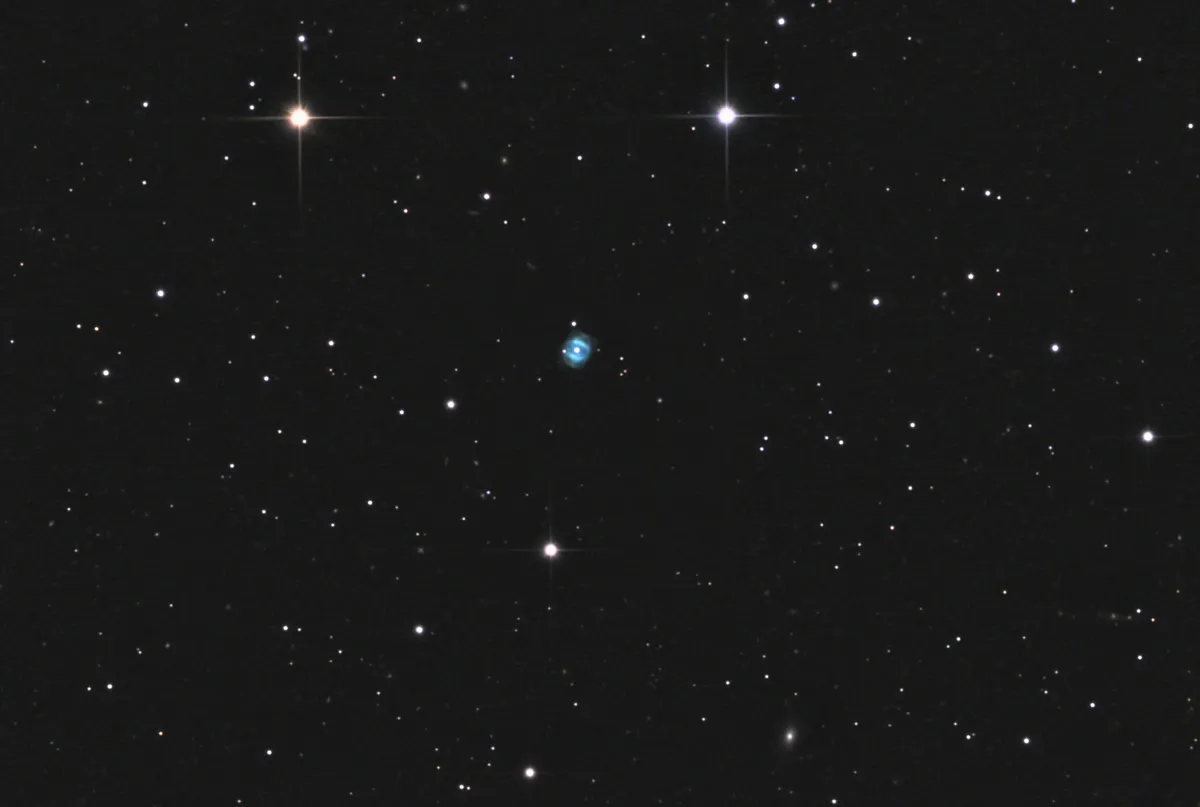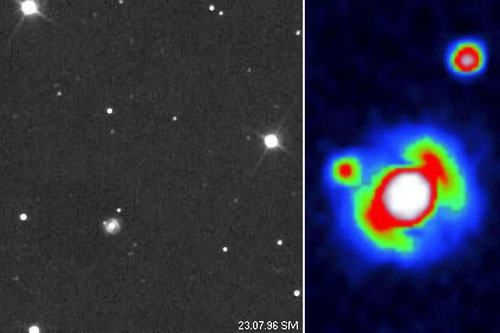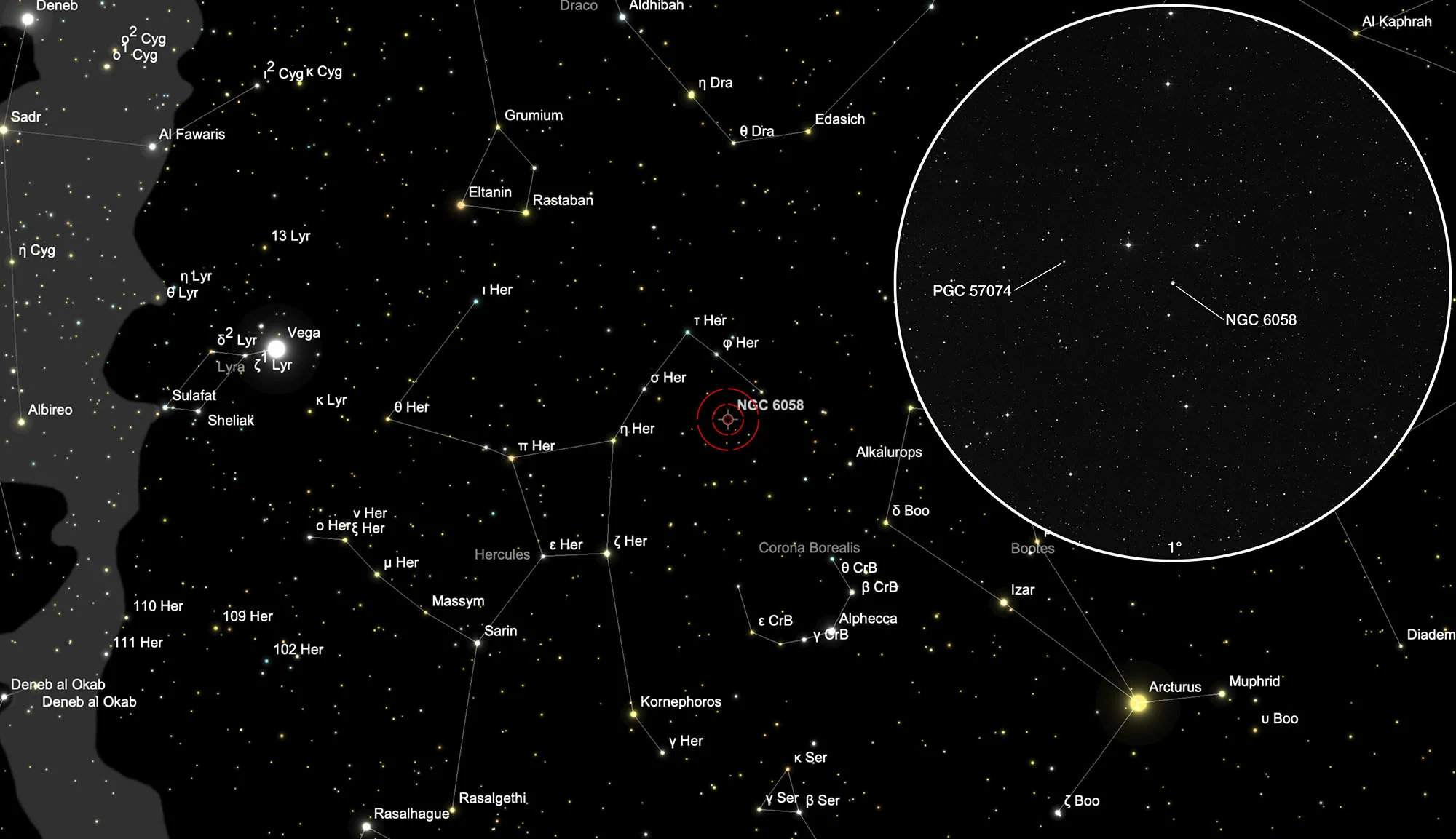Planetary Nebula NGC 6058
Object Description
The planetary nebula NGC 6058 was discovered by William Herschel and classified as the 637th object in his Very faint Nebulae class. The true nature of the nebula was not recognized until 1918 by Curtis.
NGC 6058 is about 13'000 light-years away. Its spectrum shows a clear preponderance of O-III emission than would be expected; the doubly ionized oxygen lines are almost four times as strong as H-alpha. The speed of expansion of the nebula envelope, measured in the light of the O-III lines, is 27'500 m/s. The figure on the right shows the planetary nebula in false colour representation. A bipolar shape can be clearly seen, which is reminiscent of an apple sliced lengthwise.


| Designations | PN G064.6+48.2: NGC 6058, PK 64+48.1, ARO 49, VV 76, VV' 129 |
| Right Ascension (J2000.0) | 16h 04m 27s |
| Declination (J2000.0) | +40° 40' 57" |
| Dimensions | 23." (optical) |
| Radial Velocity | +2.7 ± 3.3 km/s |
| Expansion Velocity | 27.5 (O-III) km/s |
| C-Star Designations | AG82 195, CSI +40 -16027, GCRV 9247, PLX 3646 |
| C-Star Magnitude | U: 12.37, B: 13.55, V: 13.91 |
| C-Star Spectral Type | O(H) |
| Discoverer | CURTIS 1918 |
Galaxie PGC 57074
About 12' east of the planetary nebula NGC 6058 is the faint elliptical galaxy PGC 57074. It is receding from the centre of the Local Group at a speed of about 9700 km/s. The inclination of the axis of rotation to the viewing direction is not known. [134]
How to find NGC 6058?
NGC 6058 is located in the western part of the constellation Hercules. The location of the PN is relatively prominent. It is located on the southwest side of an equilateral triangle of about 8' on a side formed by three mag 9-10. The PN can best be observed in the months of January to October.
